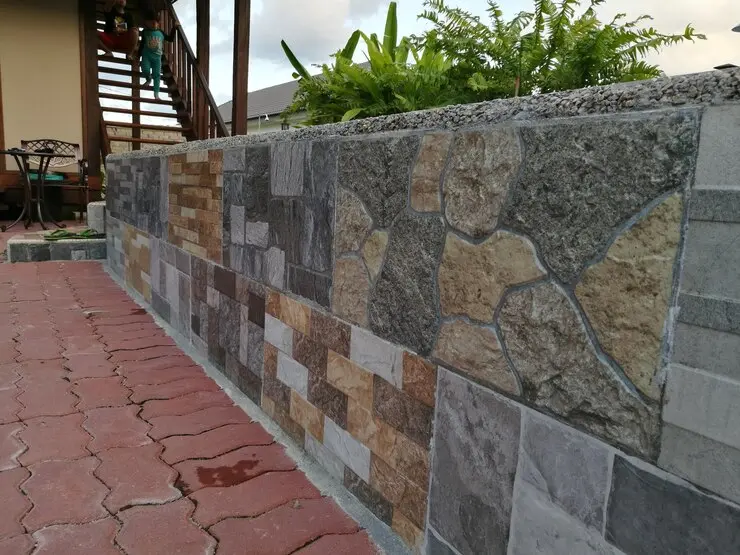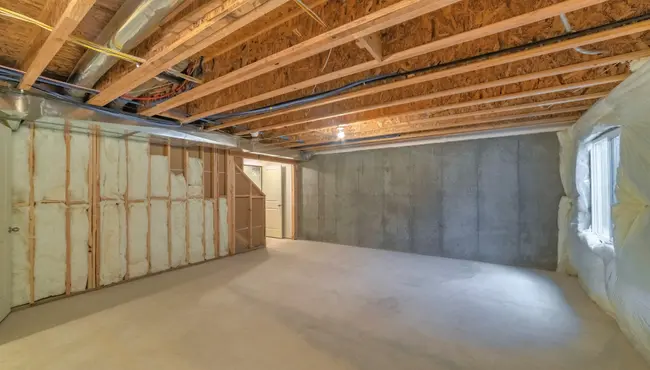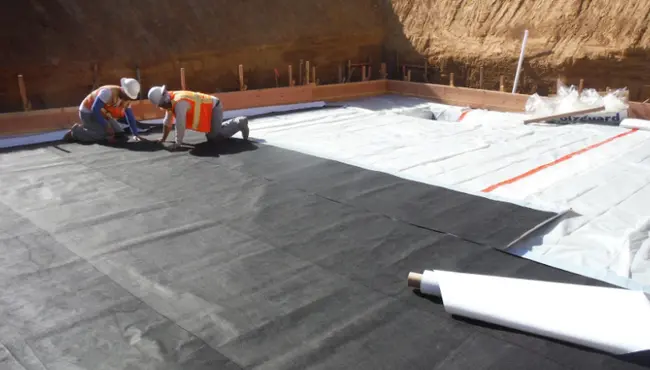
Effective retaining wall waterproofing is crucial for maintaining the structural integrity and longevity of the wall. Waterproofing prevents water seepage, reduces maintenance costs, and preserves the aesthetic appearance of the retaining walls.
This article explores the various techniques and products used in waterproofing retaining walls, with a focus on Polyguard's offerings.
Importance of Waterproofing Retaining Walls
Waterproofing retaining walls is essential for several reasons.
- First, it protects the structural integrity of the wall by preventing water infiltration, which can cause hydrostatic pressure buildup and lead to structural damage.
- Proper waterproofing reduces maintenance needs and prolongs the life of the retaining wall.
- Additionally, waterproofing helps in maintaining the wall's aesthetic appeal by preventing mold and moss growth.
Investing in high-quality waterproofing solutions for retaining walls is a cost-effective measure to ensure durability, reduce future maintenance, and enhance visual appeal.
Techniques for Waterproofing Retaining Walls

Membrane Waterproofing
Membrane waterproofing is one of the most effective methods for protecting retaining walls. There are different types of membrane waterproofing:
Sheet Membranes
650 Sheet Membrane: This is a durable and flexible 60-mil self-adhesive waterproofing membrane and vapor retarder, meant for use on foundation walls, mud slabs, sills, spandrel beams, tunnels, plaza decks, and parking garages. It provides excellent protection against water and vapor transmission through concrete walls and slabs. The 650 Sheet Membrane is known for its exceptional puncture resistance and strong joints, making it ideal for tough waterproofing applications.
WM 40 Waterproofing Membrane: This self-adhering sheet membrane is ideal for below-grade foundation walls, insulated concrete forms (ICF), and other vertical surfaces. WM 40, previously known as Home Stretch 40 Mil Membrane has a strong, flexible high-density polyethylene (HDPE) facing bonded to a rubberized asphalt waterproofing compound. It offers a consistent 40-mil thickness for reliable waterproofing.
Liquid Membranes
Stretch-Flex: Stretch-Flex is a versatile and robust waterproofing solution specifically designed for below-grade applications. This product is particularly effective in environments where dynamic movement or settling may occur. Stretch-Flex boasts a high degree of elasticity, allowing it to stretch and accommodate shifts in the substrate without compromising its waterproof integrity. This feature makes it ideal for use on foundation walls, retaining walls, and other below-grade structures where flexibility and durability are critical.
Bentonite Clay Waterproofing
Bentonite clay is a natural waterproofing material that swells when wet, creating a watertight barrier. This method is environmentally friendly and offers excellent waterproofing capabilities. However, it may be challenging to apply and is not suitable for all types of retaining walls.
Cementitious Coatings
Cementitious coatings are cement-based products that provide a waterproof barrier when applied to the wall surface. They are particularly effective for concrete retaining walls. These coatings are easy to apply and bond well with the concrete surface, creating a durable waterproof layer.
Geotextile Fabric Sealant
Geotextile fabric sealants are used to create an airtight barrier that prevents water seepage. These fabrics are applied to the wall surface and then coated with a waterproofing agent. They are highly effective in creating a durable and flexible waterproofing layer.
Step-by-Step Instructions for Waterproofing a Retaining Wall
Inspect and Prepare the Wall
Before applying any waterproofing product, it is crucial to inspect the wall for cracks, gaps, and any existing damage. Clean the wall surface thoroughly to remove dirt, debris, and loose materials. Proper surface preparation ensures that the waterproofing product adheres well and provides maximum protection.
Apply the Waterproofing Membrane
When applying sheet or liquid membranes, follow these steps for effective waterproofing:
- Clean the Surface: Ensure the wall surface is clean and dry. Remove any loose particles or debris.
- Apply the Primer (if required): Some products require a primer to enhance adhesion. Apply the primer according to the manufacturer's instructions.
- Apply the Waterproofing:
Sheet Membranes
For membrane products, such as Polyguard's Home Stretch, here is a summary of the installation requirements. All applications will not be the same so be sure to refer to your installation instructions.
- When applying the Home Stretch 40 Mil Membrane waterproofing system, ensure the substrate foundation and walls are clean, dry, and free of dirt, debris, and form release agents.
- Allow the surface to cure for at least three days prior to application. Minor voids and wall control joints should be filled and sealed with BB GF to create a smooth surface.
- Align and apply the Home Stretch 40 Mil Membrane in sections, using a hand-held roller to achieve a complete bond.
- Overlap sections and secure seams with Detail Tape for a watertight seal.
Liquid Membranes
For liquid membranes like Stretch-Flex, apply the product using a brush, roller, or sprayer, ensuring even coverage.
- Before application, ensure that the substrate foundation wall is clean, dry, and free of debris, frost, smears, and concrete form release agents.
- The substrate must cure for a minimum of three days.
- Stretch-Flex should be applied in one or more coats to achieve a continuous film at the desired coverage rate of 27 square feet per gallon (60 mils wet in total).
- Allow each application layer to dry for a minimum of 24 hours before applying the next layer, especially when exposed to direct sunlight and temperatures above 65°F, to prevent blistering.
Install a Drainage System
Proper drainage is essential to prevent water buildup behind the retaining wall. Install a drainage system such as gravel backfill, perforated pipes, or weep holes to manage water flow and reduce hydrostatic pressure.
Polyguard offers an excellent product for this purpose – Totalflow. This high-capacity sheet molded perimeter drainage system effectively channels water away from the wall, ensuring long-term stability and protection against water damage. Totalflow is designed to work seamlessly with both sheet-applied and fluid-applied waterproofing systems, providing a secure and efficient drainage solution.
Regular Maintenance
Regular inspection and maintenance are crucial for ensuring the long-term effectiveness of the waterproofing system. Check for any signs of water damage or wear and tear and address them promptly to maintain the wall's integrity.
Explore Polyguard’s Retaining Wall Waterproofing Solutions
Polyguard offers a comprehensive range of waterproofing products designed to protect retaining walls and other structures from water damage. Our solutions are engineered for durability, flexibility, and ease of application, ensuring that your retaining walls remain robust and aesthetically pleasing for years to come. Contact us today for more information.













